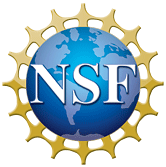2022 CSDMS meeting-094
From CSDMS
(if you haven't already)
Log in (or create account for non-CSDMS members)
Forgot username? Search or email:CSDMSweb@colorado.edu
Browse abstracts
Mass Wasting Router: A watershed-scale sediment production and transport model
Jeffrey Keck,
University of Washington Seattle Washington, United States. keckje@gmail.com
Erkan Istanbulluoglu, University of Washington Seattle Washington, United States. erkani@uw.edu
In the same way that watersheds filter precipitation signals into a time series of flow response, watersheds also filter sediment production signals into a time series of bedload transport. Here, we describe the Mass Wasting Router, a new watershed-scale sediment production and transport model written in Landlab that couples an existing shallow landslide hazard model (LandslideProbability) with an existing network-scale bedload transport model (NetworkSedimentTransporter) by (1) delineating hillslope scale landslides from maps of landslide probability, (2) routing the landslides through the watershed using a “precipiton” or “agent” style model and (3) fluvially eroding the mass wasting deposits and creating parcels for the NetworkSedimentTransporter. Preliminary model runs appear to show that variation in soil cohesion and precipitation intensity drive landslide-derived hillslope sediment production rates but valley storage processes, driven by debris flow deposition patterns, modulate the rate that sediment reaches the basin outlet.
